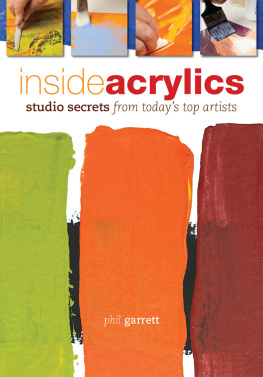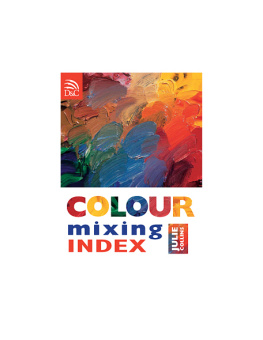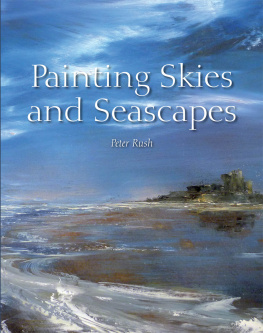
Appendix I
Storing, Framing and Care of Artwork
STORING WORK
Works of art should be stored in conditions in which you would expect to feel comfortable yourself. Dampness must be avoided to prevent mould growing on paper, canvas, wood or gesso. Extremes of temperature should also be avoided. Work should be kept in the house, not in the garage or attic where temperatures are very cold in the winter and hot in the summer. Extreme cold may cause paintings to crack. Work that is to be hung must be either framed or varnished to protect it. See also individual chapters.
Do not hang pictures in excessively bright rooms such as conservatories, and keep all pictures away from direct sunlight.
STORING WORK ON PAPER
Work on paper should be stored between sheets of acid-free tissue in a portfolio. Layer each piece of work individually. Pack the portfolio evenly, using the whole surface area, so that when shut, it will be packed firm rather than with a bulge in the middle and nothing in the outer edges. The work will get damaged if it moves around inside the portfolio.
If the work is not smudgeproof (for example, charcoal or pastels) or a thick paint film is likely to be squashed (for example, acrylic, encaustic or oil), a mount can be used to separate the surface of the picture from the next one. The width of the mount needed will depend on the size of the work. A piece approximately 56 76 cm (22 30 in) will need a mount approximately 38 mm (1 in) wide to support the piece on top of it. Mounts should be made of acid-free mountcard.
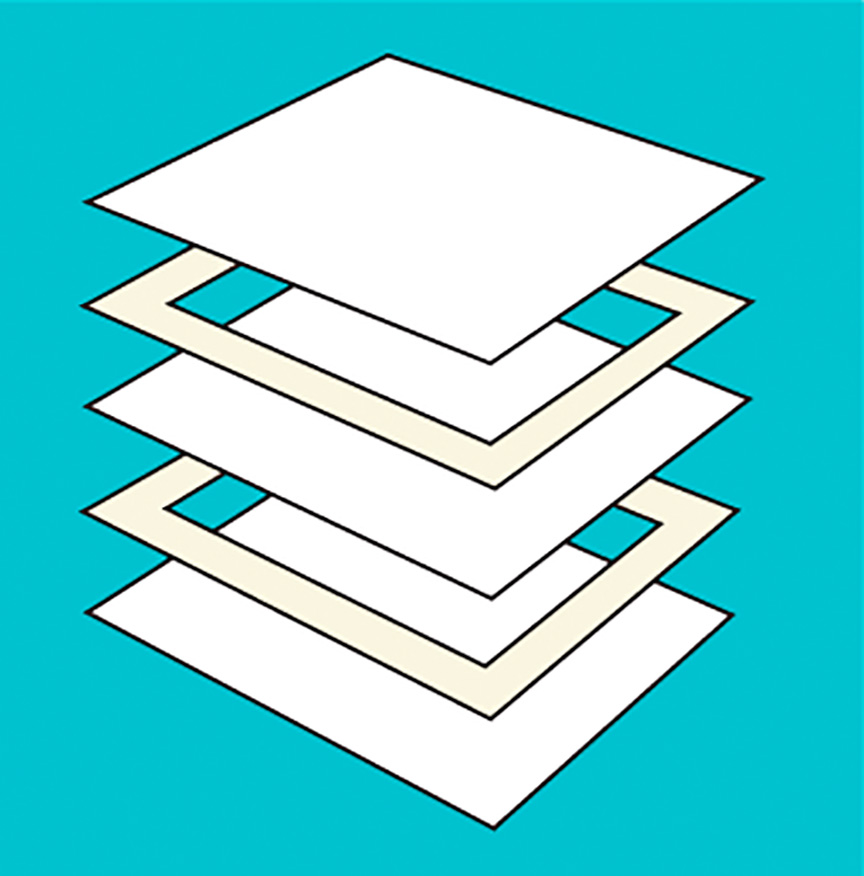
135. View of mounts and work sandwich
STORING CANVASES
Canvases should be carefully stacked against an inside wall in the house that is, one that is the least likely to get cold or damp. Make sure that all the canvases are leaning against each others stretchers and not against the canvas itself. If works are framed or have picture hooks, make sure these do not touch/dent other canvases.
PREVENTING DAMAGE TO WORK ON BOARDS
Care must be taken not to drop these boards: without frames, the edges are very susceptible to damage.
FRAMING YOUR WORK
FRAMES FOR CANVASES
The frames must be independent structures which the canvases fit into the painting should not be hung using the stretcher. The frame should be a millimetre or two wider than the painting to allow the wood of the stretcher to expand. For canvas boards, a stout backing board should be used to keep the canvas board flat in the frame.
GLAZED FRAMES
The glass in the frame should not be directly on top of the work since condensation can build up from lack of circulation and mould will grow on canvas or paper. Pastels should be very lightly fixed to deter pigment from moving to the glass surface by static electricity. An oil, encaustic or acrylic painting will also look squashed if the glass is directly on it. A mount or spacer must be used. A mount is usually coloured and shows as a border within the frame, while a spacer fits inside the lip of the frame and cannot be seen when looking at the picture. Both should be acid-free. Acid-free hinging tape should be used to hang works on paper from the mount rather than the work taped to the mount on all sides. See .
Works on thicker boards or cradled works can be floated successfully within the frame by simply screwing through the backboard in the desired location and into the work/frame in a number of places to ensure the weight is supported. Do make sure that any pilot holes you make in the back of the work are the right size for the screw and are no longer than needed, to avoid a stress area on the paint film in front of the screw.
BACKBOARDS
A backing is used to keep dirt out of the frame. If a canvas already has a paper backing on the back of the stretcher (see ), gumstrip covering the gap between the stretcher and the frame will prevent any dirt getting to the painting. If there is no backing on the stretcher, a backboard must be used to exclude dirt and moderate the effect of changes in moisture from the atmosphere. The backboard does not need to be acid-free. Double-stretched canvases will keep the painting cleaner and less susceptible to humidity changes, but a backboard will be an added protection.
For work on paper, a hardboard backing is needed. To ensure an acid-free environment, the side of the hardboard which is to be against the paper can be covered in aluminium foil. You can glue it on with PVA glue. Acid-free tissue should be used if any further packing is needed. Gumstrip should be used to cover the gap between the backboard and the frame to help keep the work dirt-free.
HANGING WORK
Do not hang work over fireplaces or radiators because the heat will dry them out too much and they will get dirtier much quicker. Bathrooms and kitchens are not recommended either because of the excess of moisture, and kitchen atmospheres are also too greasy.
DAMAGED AND DIRTY WORK
Any attempts to clean your own work are entirely at your own risk. Canvases can be carefully vacuumed using a soft, clean brush, followed by wiping over with a damp, not wet cloth. For oil paintings you could sparingly wipe over the work with turpentine on a lint free rag. Stop if any colour is seen on the rag. If you want your work repaired or cleaned without risking further damage, you should take it to a conservator. To make the right decision and avoid damaging the work further requires a great deal of skill and knowledge.
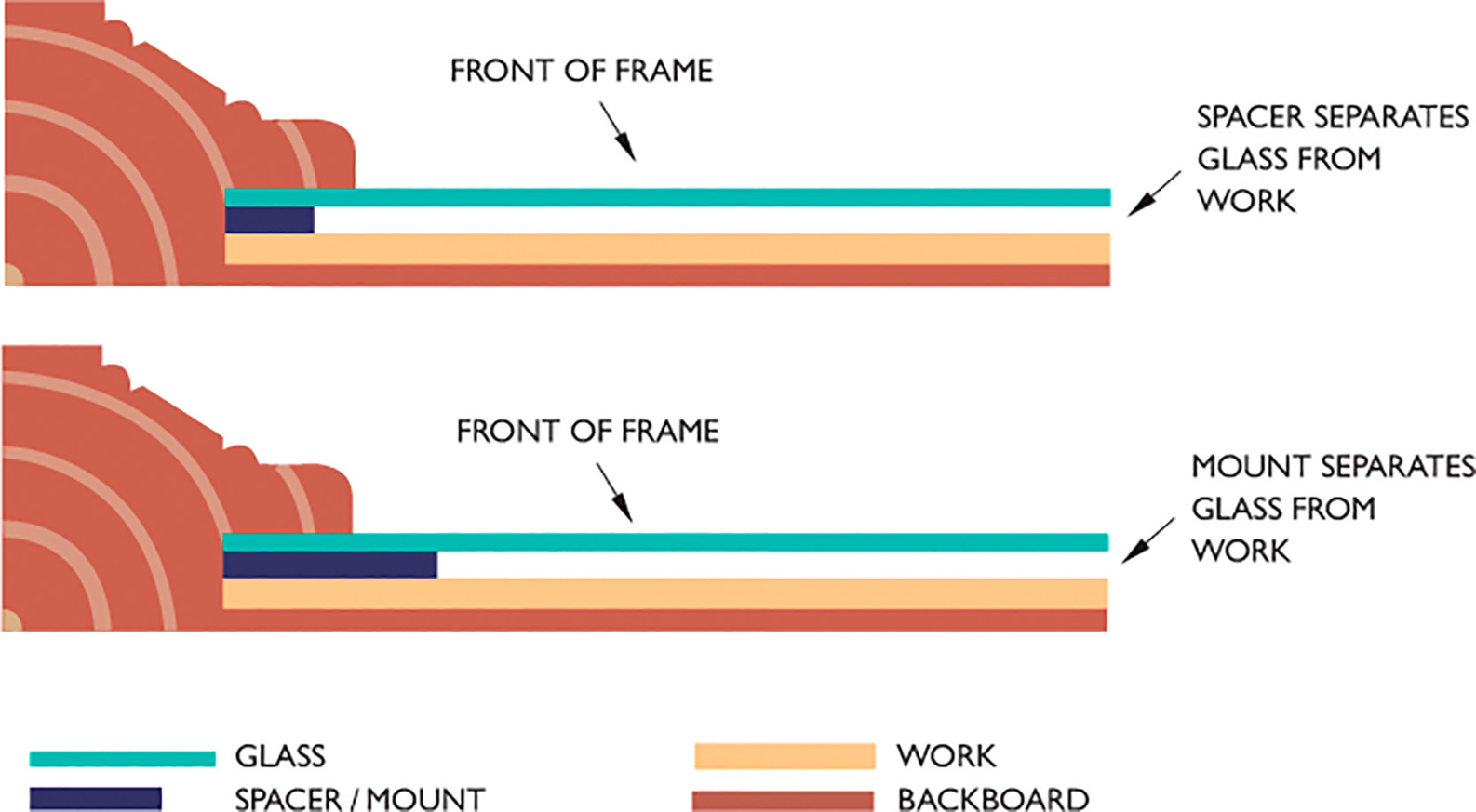
136. Cross-section of frames showing spacer and mount
APPENDIX II
NOTES FOR VEGETARIANS
If you are alkyd priming your own canvases, you may wish to use SMC or acrylic medium rather than rabbit-skin glue.
You should enquire with the manufacturer for specific details of any materials you intend to use, but generally speaking the following may include animal products: watercolour, gouache, drawing inks, Chinese stick inks and watercolour papers. Ivory black is bone black (PBk9) and should therefore be avoided in all colour ranges.
Gum tempera will be vegan as long as you ensure the glycerine is not animal-based and Ampersand Claybord is a vegan gesso board.
Vegans may wish to avoid encaustic painting and any mediums, varnishes or materials using beeswax.
It is likely that you will most notice that brushes and particularly sable cannot easily be replaced by the synthetic substitutes, and you will have to adjust your techniques accordingly.
GLOSSARY
Aluminium stearate A possible stabilizer for oil paint.
Binder The substance that binds the pigment in a paint, ground or drawing material.
Casein Adhesive made from skimmed milk.
Chassis Wooden frame, fixed or expandable, used to brace a wood-based board on which to stretch either paper or a canvas. Interchangeable with stretcher and sometimes frame.
Coverage Colloquial term used by artists
to describe how far a paint will go. It is often associated with artists quality ranges. Coverage is also affected by opacity and thickness of film.
Cradled board Originally a hardwood panel with fixed strips along the grain and movable strips across the grain on the reverse, used to brace the board but still let it expand. In this book, cradled describes a wood-based board glued and screwed to a fixed chassis. See .
Next page

